Saarijärvi 作者: 来源: 发布时间:2021-10-13
一、所属省或是州,具体位置,人口,面积
Saarijärvi is a town and municipality of Finland. It is located in the Central Finland region. The municipality has a population of 9,406 (31 January 2019) and covers an area of 1,422.72 square kilometres (549.32 sq mi) of which 170.8 km2 (65.9 sq mi) is water. The population density is 7.51 inhabitants per square kilometre (19.5/sq mi). Neighbouring municipalities are Kannonkoski, Karstula, Multia, Soini, Uurainen, Ähtäri and Äänekoski. The municipality is unilingually Finnish. The neighboring municipality of Pylkönmäki was consolidated to Saarijärvi on 1 January 2009. There are all together 241 lakes in Saarijärvi. Biggest lakes are Pyhäjärvi, Summanen and Lake Saarijärvi. Saarijärvi is the home of Bonden Paavo (Finnish: Saarijärven Paavo) in the poem by Johan Ludvig Runeberg. Juho Hyytiäinen, the great grandfather of Pamela Anderson, left the village in 1908 immigrating to the American continent.
In February 2014, Timo Rusanen took over as Mayor of Saarijärvi after Janne Kinnunen became Mayor of Viitasaari in October 2013.
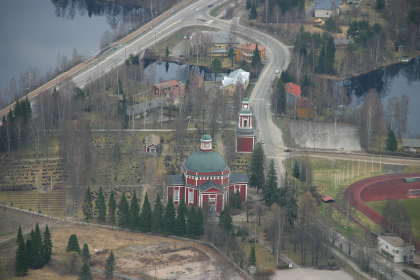
二、自然地理
1.地理条件
Saarijärvi is a Finnish city located in the Saarijärvi-Viitasaari region, in the province of Central Finland. The city is home to 9,300 people and covers an area of 1,422.72 km2, of which 171.02 km2 are water bodies. The population density is 7.43 inhabitants / km2 and it is located about 60 kilometers north of Jyväskylä.
Saarijärvi's neighboring municipalities are Kannonkoski, Karstula, Multia, Soini, Uurainen, Ähtäri and Äänekoski. The municipality of Pylkönmäki (915 inhabitants) was annexed to Saarijärvi at the beginning of 2009.
2. 交通情况
Public transport
Public transport is taken care of by buses and trains. In Saarijärvi, buses run regularly between Saarijärvi and Jyväskylä and also to the west from Saarijärvi towards Karstula and to the north towards Äänekoski. Saarijärvi doesn’t have passenger traffic on trains and the closest railway station is in Jyväskylä.
Saarijärvi’s Matkahuolto services you can find at the Lahjapiste in Säästökeskus, adr. Kauppakatu 7. Passenger traffic’s bus stop is located at the address Torikatu 6. If you use a bus or a train regularly, you should buy a series ticket or a one-month season ticket. Students and retirees get a discount on buses and trains.
Taxi
Several taxis and transport entrepreneurs operate in Saarijärvi. The fee taxis charge is determined by the amount of driven kilometers. You can order a taxi by phone. On Keski-Suomen Aluetaksi’s website (https://keskisuomenaluetaksi.fi/) you can find a rate counter that shows you the estimated cost of the drive when you enter the departure and arrival points. Regional taxi’s telephone number is 0100 866 44. The call is subject to a charge.
Private car
Buying and using a private car is fairly expensive in Finland. Cars in good condition cost several thousand euros. Owning and using a car also includes many expenses, such as gas, insurances, tires, car maintenance and repairs and car taxes.
If you have a car, you must get vehicle insurance. You can get vehicle insurance from an insurance company.
In Finland a car must be inspected and registered. Car inspections are done at car inspection stations. Registrations are done for instance at car inspection stations, insurance companies and car shops. You can also register your car online.
According to the law a car must have snow tires in the winter in Finland. You can use stud tires or studless snow tires. A car with stud tires is easier to control on a slippery road. However, you can’t use stud tires in the summer.
In Finland traffic regulations must be followed carefully. The police monitor the observance of traffic regulations. You can get fines for breaking the traffic regulations.
Driving any kind of motor vehicle is a crime, if the driver is intoxicated (alcohol or drugs).
In order to drive a car you need a driver’s license. In order to get a driver’s license, you must be at least 18 years old. Before you can get a driver’s license, you must participate in driving lessons and finish a driving test. You can get driving lessons at a driving school. Also for instance a relative or an acquaintance with driver’s license and driving experience can teach you. This requires a driving instruction permit from Trafi.
In order to drive a motorcycle you need a motorcycle license. What kind of license you need depends on what kind of motorcycle you want to drive.
In order to drive a moped you need a moped license, if you don’t have driver’s license. Moped license is not required, if you turned 15 before 1st January 2000.
In Saarijärvi driving lessons are given at Saarijärven Autokoulu ( Saarijärvi`s driving school), adr. Paavontie 17, Saarijärvi, tel. 0500 645 583.
Information about driver’s licenses can be found on the police’s and Finnish Transport and Communications Agency Traficom’s websites.
Foreign driver’s license in Finland
If you have a driver’s license from a Nordic country, EU country or EEA country, it’s valid also in Finland. You can change it to a Finnish driver’s license, if you live in Finland permanently.
If you have a driver’s license from a country that is part of the Geneva or Vienna Convention on Road Traffic, you can drive with your license for two years at the most in Finland. You must change your license to a Finnish driver’s license within two years of your move to Finland.
If you have a driver’s license from a country that isn’t part of the Geneva or Vienna Convention on Road Traffic, you can drive with that license for a year from the time you were registered in the Finnish population register.
三、经济发展和规模
The Saarijärvi-Viitasaari sub-region’s economy is typical of a sparsely populated rural area. It relies principally on agriculture and forstry, which have seen large job losses in recent years. Rural tourism is still under-developed. In general, Central Finland suffers more than other Finnish regions from low productivity, as its business base is chiefly composed of small and medium enterprises(SMEs), with a low level of research and development(R&D) investment( Gooddard et al., 2006). Disparities between the Jyväskylä city-region area and rural areas of the Central Region have been growing: Saarijärvi-Viitasaari sub-region’s GDP is currently below 75% of central Finland’s, and its unemployment rate is 13%( in 2012). The share of population with tertiary education is 16%, half that of Jyväskylä
四、产业特点/重点项目
In autumn 2019, JAMK University of Applied Sciences received ERDF funding for a project to create a business accelerator operating model. The business accelerator was developed in collaboration with enterprises, the City of Saarijärvi and key strategic partners, such as the Baltic Sea Action Group, the Finnish Forest Centre, ProAgria Central Finland, KasvuOpen Oy and VTT Technical Research Centre of Finland.
Bioeconomy is a rapidly growing sector that opens up new opportunities for businesses. The objective of the business accelerator, known as BioPaavo, is to create a systematic operating model to accelerate the business development and growth of SMEs in the bioeconomy sector.
"New bioeconomy and circular economy business is constantly developed in Finland and around the world that is based on sustainable use of renewable natural resources. This, in turn, promotes resource efficiency and carbon reduction. The aim of the Business Accelerator is to help innovative and growth-oriented SMEs develop and commercialise solutions to mitigate climate change," says Project Manager Merja Rehn.
The project will last three years. During this period, an operating model will be created that will provide enterprises in the bioeconomy sector with added value in solving development challenges, as well as an earnings logic and financing base to secure the continuation of the operations even after the end of the project.
The business accelerator combines rural areas and state-of-the-art communications technology, natural resources, strong R&D services, new partnerships and learning. The project will provide an innovative framework for bioeconomy and the development of environmentally friendly
business and new added value services in Saarijärvi.
五、风景名胜,景点( attractions)
1. Pyhä-Häkki National Park
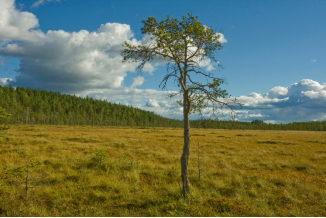
Pyhä-Häkki National Park is a national park in Central Finland. It was established in 1956 and covers 13 square kilometres. Its foundation was planned already in the late 1930s, but the Second World War interrupted these plans. The national park protects old Scots pine and Norway spruce copses, which started growing when Finland was still under Swedish rule, and bogs, which comprise half of the national park. The national park is the largest remaining area of virgin forest in the southern half of Finland. In addition to the pine and the spruce, Betula pendula, Betula pubescens, Populus tremula, and Alnus glutinosa are the taller tree species encountered in the national park.
2. Lake Saarijärvi
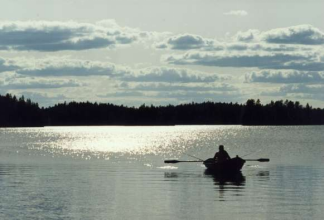
Lake Saarijärvi is a medium-sized lake in Central Finland. Saarijärvi in a very common name of a lake in Finnish. There are 198 lakes with this name in Finland. The biggest of them is located in Saarijärvi municipality. The municipality is located between two lakes, Saarijärvi and Pyhäjärvi.
3. Saarijärvi Museum
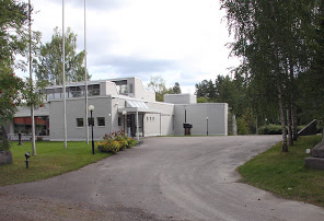
Saarijärvi Museum stores and produces new information as a result of its work. In addition to the special exhibitions in the main building, the museum has the summer locals Gentry Home Museum and the Stone Age Village. The museum is responsible for exhibitions and collections in Tapper Brothers' Juhola, and as an expert service for the collections of two art foundations.
六、历史文化
1.历史
The Saarijärvi region has been inhabited for more than 8,000 years, commemorating archeological finds in the Summassaari area and the Stone Age village. Written records of settlement begin in the 1550s, when King Gustav of Vaasa led intensive settlement activities. Thus, in 1628, the chapel congregation of the parish of Rautalammi was established in the area, which soon in 1639 became an independent parish. At that time, Saarijärvi was still known as Palvasalmi, and it included the later municipalities of Karstula, Pylkönmäki and Kyyjärvi entirely, as well as parts of Uurainen, Konginkangas and Äänekoski. In 1749, the population of Old Saarijärvi was 1,380. The population increased to 7,440 by 1860. Saarijärvi became a city in 1986.
The first people reached the area of Saarijärvi after the last ice age around 8,000 years ago. In the Middle Ages the Hämeer used the area as a hunting ground. A settled settlement, however, only emerged in the middle of the 16th century in the course of internal colonization under King Gustav Wasa. The first settlers were partly Hämeer, but above all farmers from Savo. In 1560 Saarijärvi only had 13 houses, four years later 34. First, the peasant settlements belonged to the large community of Sysmä, sb 1561 then to the large community of Rautalampi that was detached from Sysmä this year. In 1628 Saarijärvi became a chapel parish of the Rautalampi sock, in 1639 it was expanded into a separate parish under the name Palvasalmi, expanded to include some areas of the parishes of Laukaa and Ruovesi. The name Saarijärvi (in German "Inselsee") only came into use around 1690.
In the Great Northern War, the villages of the community were badly devastated. In 1714 Russian troops burned down the church and parish of the village, in the village of Lännevesi only three houses survived the war. For centuries, agriculture was the main occupation of the inhabitants, first barley, and from the 18th century above all rye cultivation. More and more fields were created by slash and burn. In addition, the tar distillery gained in importance, then in the 19th century the forestry and dairy industry.
2. 文化
Saarijärvi Market Square in July 2018.During the summer, the Midsummer Games are held on the sports field in the center of Saarijärvi, where top international athletes have visited. The village of Pylkönmäki, on the other hand, hosts the Pent Olympics, which is a July athletics event for children and families. Kirmot is a music festival that lasts for about a week, with a variety of music events ranging from spiritual church concerts to today’s pop music. The Åland camping site hosts popular "rompetori" days, the most popular of which bring together sellers, traders and customers from all over Finland.
Saarijärvi's valuable cultural environment includes the Kolkanlahti farm, which houses the Säätyläismuse in the main building, and the Kolkanniemi rectory. Kukonhiekka Amusement Center opens in May and hosts dances and concerts on weekends until October. The performers are Finland's leading entertainment artists.
Food culture
Saarijärvi 's parish dishes were the shoemaker's roast and mashed potatoes made from vendace in the 1980s, ie porridge, lantern porridge and water lingonberries, as well as charred fish.
七、其他信息
Saarijärvi has existed as a political community since 1866. As a result, the towns of Karstula (1867), Uurainen (1868) and Pylkönmäki (1914) were separated from the larger community of Saarijärvi as independent communities; Saarijärvi lost further areas to the city of Äänekoski. Saarijärvi has had city rights since 1986. At the beginning of 2009, the municipality of Pylkönmäki was reunited in Saarijärvi.
Around 1870, the population of Saarijärvi was 14,404 people. Like many rural regions in Finland, Saarijärvi has had a significant population decline for decades. In the past ten years alone, the population has decreased by more than 700 heads, i.e. more than 7 percent.
八、联系方式
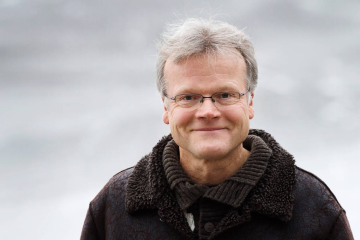
Mayor of Saarijärvi: Timo Rusanen
Website:www.saarijarvi.fi
Address: Sivulantie 11, PL 13, 43100 Saarijärvi
Email: kirjaamo @ saarijarvi.fi
Phone number: +358 14 4598208
